 Most viewed - NAGASAKI 長崎県 Most viewed - NAGASAKI 長崎県 |
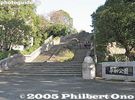
Entrance to the Peace Park941 views
|
|

The Peace Statue was built in Aug. 1955, the 10th anniversary of the bombing. The Peace Statue was modeled after popular wrestler Rikidozan.902 views
|
|
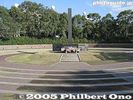
Hypocenter of atomic bomb855 viewsA series of concentric circles emanate from the marker.
|
|

Peace Fountain with the Peace Statue in the distance829 viewsA fountain of water was made for the victims who were desperate for water.
|
|

Nagasaki atomic bomb peace park hypocenter819 views
|
|

Peace Statue description807 views
|
|

Memorial at hypocenter800 viewsErected in July 1995 for the 50th anniversary.
|
|
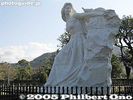
Peace memorial from China799 viewsThe park also has peace monuments from various countries.
|
|
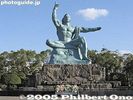
Peace Statue772 viewsSculptor was Seibo Kitamura.
|
|

Nagasaki Atomic Bomb Museum entrance772 views
|
|

Monument next to Peace Statue747 views
|
|

Hypocenter marker644 viewsOn August 9, 1945 an atomic bomb exploded in the sky about 500 meters above the point where this monument now stands. The area within a 2.5 kilometer radius of the hypocenter was completely devastated.
|
|

Hypocenter description640 views
|
|
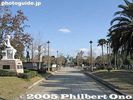
Path to Peace Statue619 views
|
|

Remains of Urakami Cathedral wall614 viewsNext to the hypocenter is this partial cathedral wall.
|
|

Peace memorial from Germany608 views
|
|

Registry Shelf storing the names of atomic bomb victims603 views
|
|

Peace memorial from Czechoslovakia598 views
|
|

Hypocenter of atomic bomb, adjacent to Peace park598 viewsAlmost right next to the Peace park is the hypocenter marker above which the bomb exploded. Often hoards of students on class trips can be see squatting here listening to a talk about this place.
|
|

Nagasaki Atomic Bomb Museum. Next to the hypocenter is the atomic bomb museum and registry shelf which stores the names of the atomic bomb victims.580 views
|
|

The folded right leg symbolizes quiet meditation.578 views
|
|
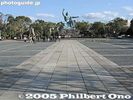
Peace Statue574 viewsEvery Aug. 9, the anniversary of the atomic bombing, a memorial service is held here.
|
|

The Registry Shelf points to the hypocenter.534 views
|
|
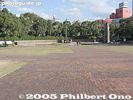
Hypocenter531 views
|
|
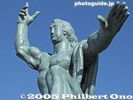
The outstretched left hand symbolizes tranquility and world peace.521 views
|
|

The closed eyes express a prayer for all war victims.483 views
|
|

The right hand points to the threat of nuclear weapons.461 viewsThe bronze statue is 10 meters tall.
|
|
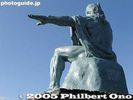
The left leg is poised for action to assist humanity.441 views
|
|

422 views
|
|
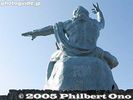
Rear view412 views
|
|
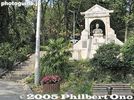
Statue of Ueno Hikoma213 views
|
|
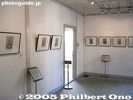
Photo museum136 views
|
|
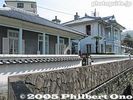
Photo museum134 views
|
|

Statue of Ueno Hikoma125 views
|
|
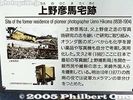
Description of Ueno Hikoma residence and studio118 viewsIt says that Hikoma opened Japan's first photo studio here in 1862.
|
|

Statue of Ueno Hikoma114 views
|
|

Grave of Ueno Hikoma110 views
|
|

Statue description105 views
|
|

Site of Ueno Hikoma residence and studio104 viewsHikoma opened Japan's first portrait studio here in 1862. The site is now occupied by a parking structure.
|
|
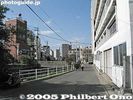
Site of Ueno Hikoma residence and studio103 views
|
|
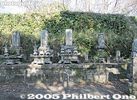
Grave of Ueno Hikoma103 views
|
|
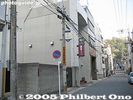
Ueno Hikoma birthplace101 views
|
|
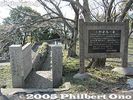
Grave of Ueno Hikoma101 views
|
|
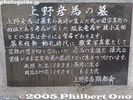
Grave of Ueno Hikoma101 views
|
|

Ueno Hikoma birthplace100 views
|
|
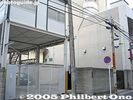
Ueno Hikoma birthplace100 views
|
|

Site of Ueno Hikoma residence and studio99 views
|
|

In Nagasaki Prefecture, Shimabara Castle is the picturesque symbol of the city. Short walk from Shimabara Station (Shimabara Railway that starts from Isahaya Station).82 views
|
|

Shimabara Castle was the government headquarters of the Shimabara Domain until 1871. Shimabara Castle's tenshu main tower and a corner turret (foreground).63 views
|
|

Besides the moat and stone walls, Shimabara Castle has two castle buildings. The tenshu main tower (rebuilt in 1964) and a corner turret (foreground).42 views
|
|

Shimabara Castle and koinobori carp streamers.29 views
|
|

View from the turret.29 views
|
|

Lookout deck on the top floor of Shimabara Castle's main tower.28 views
|
|

View from the lookout deck on the top floor of Shimabara Castle's main tower.28 views
|
|

Way to Shimabara Castle. The sign says "Beware of slippery surface of volcanic ash." 火山灰のためスリップ注意27 views
|
|

After the Mt. Fugen-dake's eruption in 1991, Shimabara Castle grounds served as the command headquarters for a small contingent of Self-Defense Forces monitoring the mountain 24 hours a day.26 views
|
|

Shimabara Castle moat.26 views
|
|

Shimabara Castle is often mistaken as the site of the Shimabara Rebellion (1637-8). The rebellion actually took place at Hara Castle (now in ruins near Hara-jo Station on the Shimabara Railway) in the southern part of Shimabara Peninsula.24 viewsHowever, the Shimabara Rebellion was sparked by the construction of Shimabara Castle when the local people were charged high taxes to finance the construction.
|
|

View from the lookout deck on the top floor of Shimabara Castle's main tower. Looking toward Shimabara Station (end of straight road).24 views
|
|

24 views
|
|

Shimabara Station turnstile.24 views
|
|

Shimabara Station train.24 views
|
|

View from the lookout deck on the top floor of Shimabara Castle's main tower.24 views
|
|

The castle donjon or main tower (tenshu) is a museum of Christian relics and folkcrafts. The top floor gives a fine view of the entire city and part of Mt. Fugen-dake.23 views
|
|

Shimabara Castle's castle donjon or main tower.23 viewsAlmost 40,000 peasants occupied Hara Castle to protest their religious and economic oppression. The rebellion lasted for about three months until the shogunate's troops overpowered and slaughtered the rebels. This effectively ended the propagation of Christianity in feudal Japan.
|
|

After the Mt. Fugen-dake's eruption in 1991, Shimabara Castle grounds served as the command headquarters for a small contingent of Self-Defense Forces monitoring the mountain 24 hours a day.23 views
|
|

Shimabara Station looks like a castle building. Shimabara Castle is a short walk near Shimabara Station.23 views
|
|
|
|
|